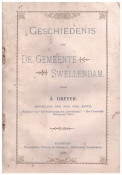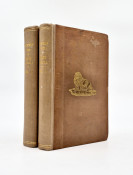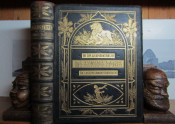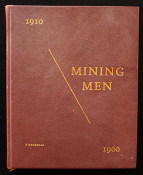482 pages, light brown card covers, contents stapled inside the covers.
Cover title with parallel English and Afrikaans text.
There is a loose insert of 9 pages being the Supplementary voters roll for the period ended 31 January 1937.
Only 1000 copies were printed. G.P. 8,9626 – 1936 – 1000
The National Library in Cape Town houses the 1937 copy, and the Cape Archives Depot holds 1936 -1938.
The voters roll is delineated by magisterial district where the voter is listed alphabetically by name, residential address, trade, profession or other occupation, and the qualification of whether they received wages (w) or a salary (s) and the address of their employer.
The voters’ rolls for 1935 were broken down by race in each province (using the racial classifications in use in South Africa at the time). In the Cape Province there were 382,103 whites, 10628 native, 21,596 coloured and 1,401 voters on the roll.
Under the Representation of Natives Act 1936, all registered black voters in the Cape Province were removed from the common voters’ lists and placed on a special Cape Natives voters’ roll. This served to effectively dismantle the traditional multi-racial "Cape Qualified Franchise" system.
The 1938 South African general election was held on 18 May 1938 for the 150 seats in the House of Assembly of the Union of South Africa. The previous general election was held in 1933. The United Party won an absolute majority. No black voters were eligible to participate in the 1938 general election, apart from the one from Natal.
The three (white) Native Representative Members from Cape Province were elected on a different date, for a term (expiring on 30 June immediately following a period of five years after the previous election) unaffected by dissolutions of Parliament. The first group of native representatives had been elected in June 1937. The term for which they were elected expired on 30 June 1942. The representatives took their seats in the House of Assembly in 1938, and sat as Independent MPs. https://en.wikipedia.org/wiki/South_African_general_election,_1938
Standard Encyclopædia of South Africa volume 2 page 137-138: In 1936 parliament almost unanimously passed the Representation of Natives Act No 12 of 1936. With this act, the Bantu electors in the Cape Province were removed from the ordinary electoral roll and placed on a separate roll with the right to elect 3 representatives in the Union House of Assembly and 2 in the Cape Provincial Council.
Until then the Cape province had a qualified franchise which had allowed a small number of blacks in the Cape to vote for the common roll (although not to sit in parliament) in terms of the Cape Qualified Franchise. The qualified franchise dated back to the pre-Union period, when the Cape was a separate British colony.
In addition the Bantu population of the whole union could designate 4 senators to represent their interests. For this purpose the Union was divided into 4 electoral divisions; Natal, the OFS and Transvaal combined, the Transkei and the rest of the Cape Province. This resulted in the Cape Native Voters Roll published for the Cape province in 1936.
Election was not to be direct but by means of electoral units such as chiefs, headman local councils etc. which would give a vote representative of definite communities. The four Senators would be additional to the usual membership of the Senate, just as the other Bantu representatives in the Assembly and the Cape Provincial Council. They all had to be white.
The act also made provision for the establishment of a Natives Representative Council, a permanent body to serve as the mouthpiece for the Bantu in approaching government. The Representative Council had the function of considering proposed legislation that affected the Bantu. Intimately connected with the new policy on Bantu Representation was the land question.
By another act No. 18 of 1936, The Native Trust and Land Act, the South African Native Trust was established, a corporate body with the Governor General as trustee, with the money provided by Parliament.
- Size: oblong 4to (210 x330)
- Sold By: Clarke's Africana & Rare Books
- Contact Person: Paul Mills
- Country: South Africa
- Email: [email protected]
- Telephone: 021 794 0600
- Preferred Payment Methods: Visa & Mastercard via PayGate secure links and Bank transfers.
- Trade Associations: ABA - ILAB, SABDA

Similar lots in the current auction View all
Click on an item to view more details and to bid.





















